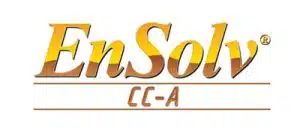CONTENT ON THIS PAGE IS RETAINED FOR INFORMATION ONLY
DUE TO n-Propyl bromide now being included in Annex 14 of REACH
EnviroTech Europe Ltd (ETE) continue to publish it as historical information and to record changes occurring in legislation which have affected decisions on formulations and equipment used in vapour degreasing - the most effective, quickest, flexible and cheapest cleaning system used in industry.
EnSolv® invented and patented by EnviroTech has been a market leader all over the world for vapour degreasing. It is based on n-bromopropane (nPB) which now cannot be used as a vapour degreaser within the UK or EU without authorisation.
Archived information about EnSolv® can be found using the Discontinued Products & Resources navigation menu on this page.
Using experience accumulated over 40 years supplying and supporting users of the vapour degreasing process ETE specialists have developed “drop in” alternatives:
ProSolv®, ProSolv5408e® and EnSolv CC-A® give the same or improved level of performance and economy as the original EnSolv® products.
Please contact our advisers who are available to discuss your needs and propose the best replacement product.
Or please click here to return to our vapour degreasing products homepage for information about our current products.
Frequently Asked Questions
What is EnSolv?
Are all the substances used in formulating EnSolv pre-registered for REACH?
Why is EnSolv considered to be safer than Trichloroethylene (TCE)?
What is the classification for n-Propyl Bromide (nPB)?
R10, R20, Xn
to
R11, R60, R48/20, R63, R36/37/38, R67, T
This classifies it as Reprotoxic and puts it into the group of CMR’s (Carcinogens, Mutagens and Reprotoxic).
Why is the current classification for nPB wrong?
With n-Propyl Bromide the major constituent, how can you classify EnSolv differently?
Is nPB considered to be a carcinogen?
How is the OEL for EnSolv established?
How does the Solvent Emissions Directive (SED) affect the use of EnSolv?
How does the Solvent Emissions Directive (SED) affect the use of EnSolv?
How does Annex XIV of REACH affect the use of EnSolv?
1. Applications for Authorisation must be received by the 4 January 2019 to insure uninterrupted use.
2. Without Authorisation the substance will be banned after 4 July 2020 (so called “Sunset Date”)
Click here to reads more about Annex XIV of REACH.
Is EnSolv flammable?
nPB was reclassified in the 29th ATP as R11 Highly flammable following some debatable test results and a majority opinion from an expert group. Many experts disagree with the opinion. When the same test method was used on other common vapour degreasing solvents, similar flash points were found. If those flash points were used to define their flammability then all would be Flammable (R10) or Highly flammable (R11)
| Solvent | Flash point | Derived Flammability |
|---|---|---|
| Trichloroethylene | +24ºC | R10 |
| Methylene Chloride | -5.5 ºC | R11 |
| HFE 72 DE | -9 ºC | R11 |
| HFE 71 DE | -16 ºC | R11 |
| HFE 71 A | -14 ºC | R11 |
| nPB | -5 ºC | R11 |
When other appropriate methods are used, no flash point can be found. However the HSE are not prepared to reclassify those solvents or change the R11 assigned to nPB. EnSolv® being a preparation can be self classified and ETE have had our products tested by an independent GLP test house specialising in flammability and risk assessment who confirm they do not have a flash point and are therefore not flammable.
Is EnSolv flammable?
nPB was reclassified in the 29th ATP as R11 Highly flammable following some debatable test results and a majority opinion from an expert group. Many experts disagree with the opinion. When the same test method was used on other common vapour degreasing solvents, similar flash points were found. If those flash points were used to define their flammability then all would be Flammable (R10) or Highly flammable (R11)
| Solvent | Flash point | Derived Flammability |
|---|---|---|
| Trichloroethylene | +24ºC | R10 |
| Methylene Chloride | -5.5 ºC | R11 |
| HFE 72 DE | -9 ºC | R11 |
| HFE 71 DE | -16 ºC | R11 |
| HFE 71 A | -14 ºC | R11 |
| nPB | -5 ºC | R11 |
When other appropriate methods are used, no flash point can be found. However the HSE are not prepared to reclassify those solvents or change the R11 assigned to nPB. EnSolv® being a preparation can be self classified and ETE have had our products tested by an independent GLP test house specialising in flammability and risk assessment who confirm they do not have a flash point and are therefore not flammable.
Why should I use EnSolv?
We can provide you with a Material Safety Data Sheet, independent laboratory reports, product samples or technical assistance. For more information or advice please contact us by telephone on +44 (0) 20 8281 6370 or use our contact form.
Vapour degreasing solvents are supplied and supported by EnviroTech Europe Ltd. Manufactured in the United Kingdom and available on short delivery times through our dedicated team of distributors worldwide.

